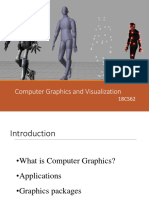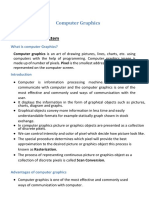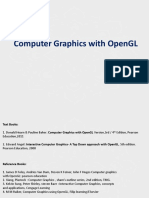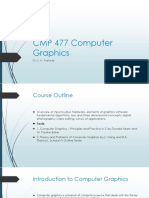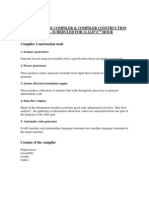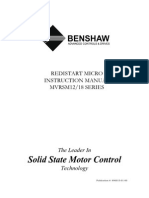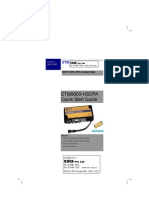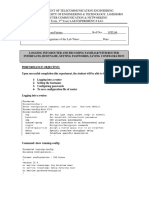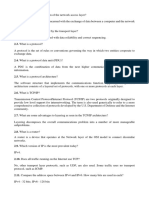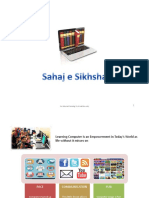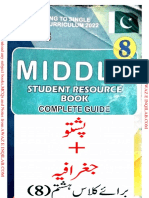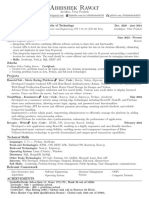0% found this document useful (0 votes)
181 views15 pagesComputer Graphics: Section - I
This document provides an introduction to computer graphics. It discusses typical graphics systems which include computers, display and input devices. It outlines several application areas of computer graphics such as entertainment, computer-aided design, scientific visualization, training and education, computer art, image processing, and graphical user interfaces. It also discusses graphics packages and platforms that are commonly used.
Uploaded by
aathikahCopyright
© Attribution Non-Commercial (BY-NC)
We take content rights seriously. If you suspect this is your content, claim it here.
Available Formats
Download as PDF, TXT or read online on Scribd
0% found this document useful (0 votes)
181 views15 pagesComputer Graphics: Section - I
This document provides an introduction to computer graphics. It discusses typical graphics systems which include computers, display and input devices. It outlines several application areas of computer graphics such as entertainment, computer-aided design, scientific visualization, training and education, computer art, image processing, and graphical user interfaces. It also discusses graphics packages and platforms that are commonly used.
Uploaded by
aathikahCopyright
© Attribution Non-Commercial (BY-NC)
We take content rights seriously. If you suspect this is your content, claim it here.
Available Formats
Download as PDF, TXT or read online on Scribd
/ 15



